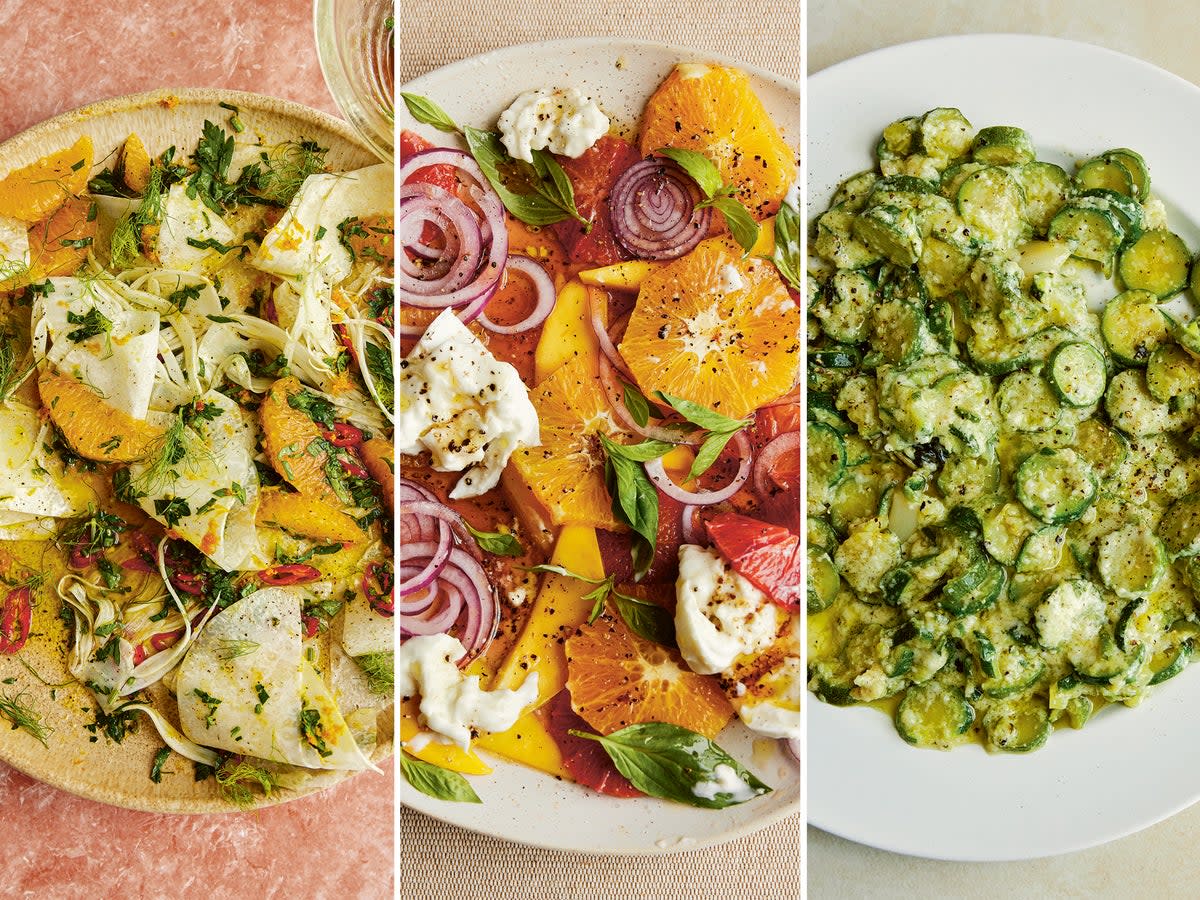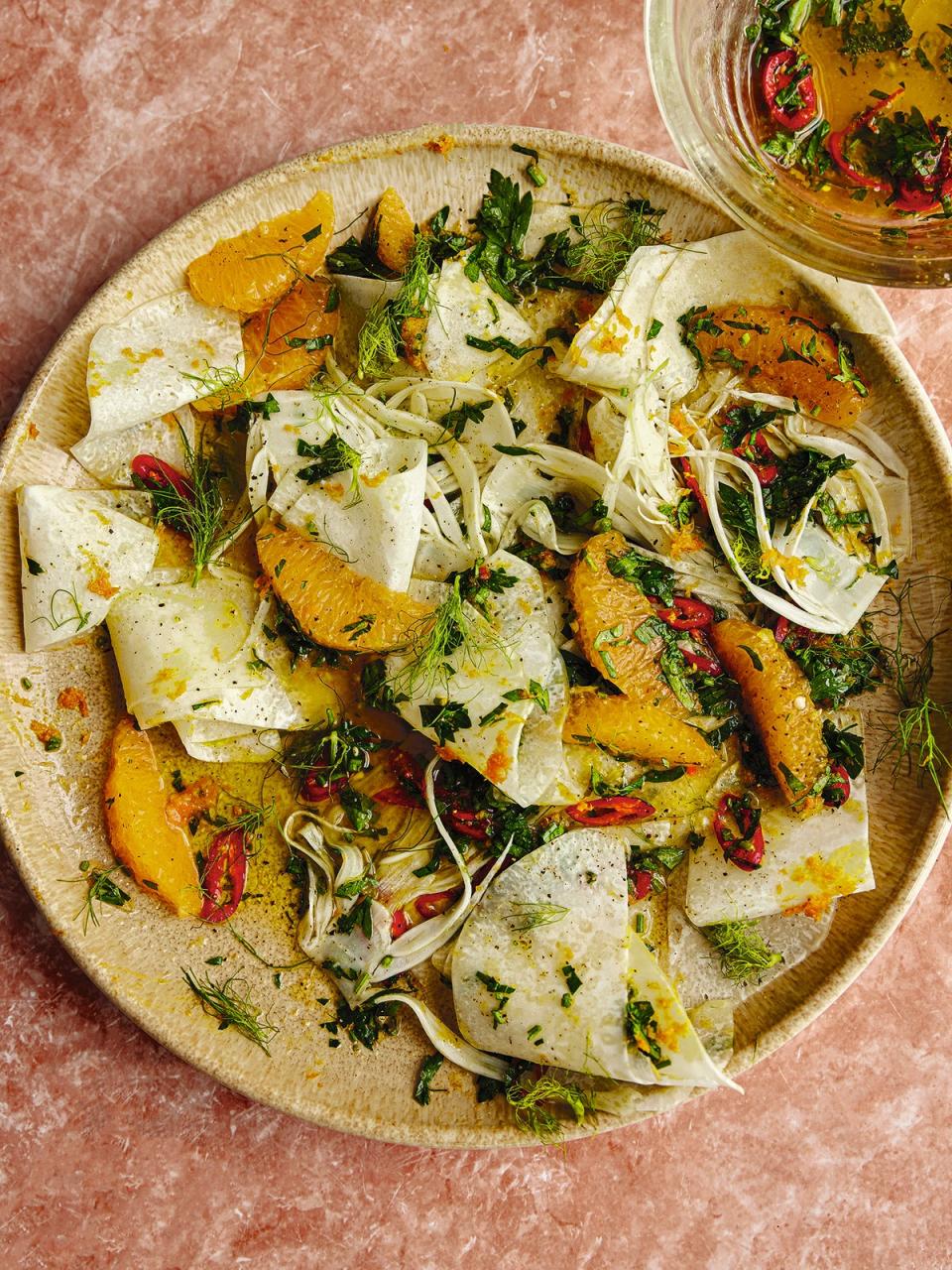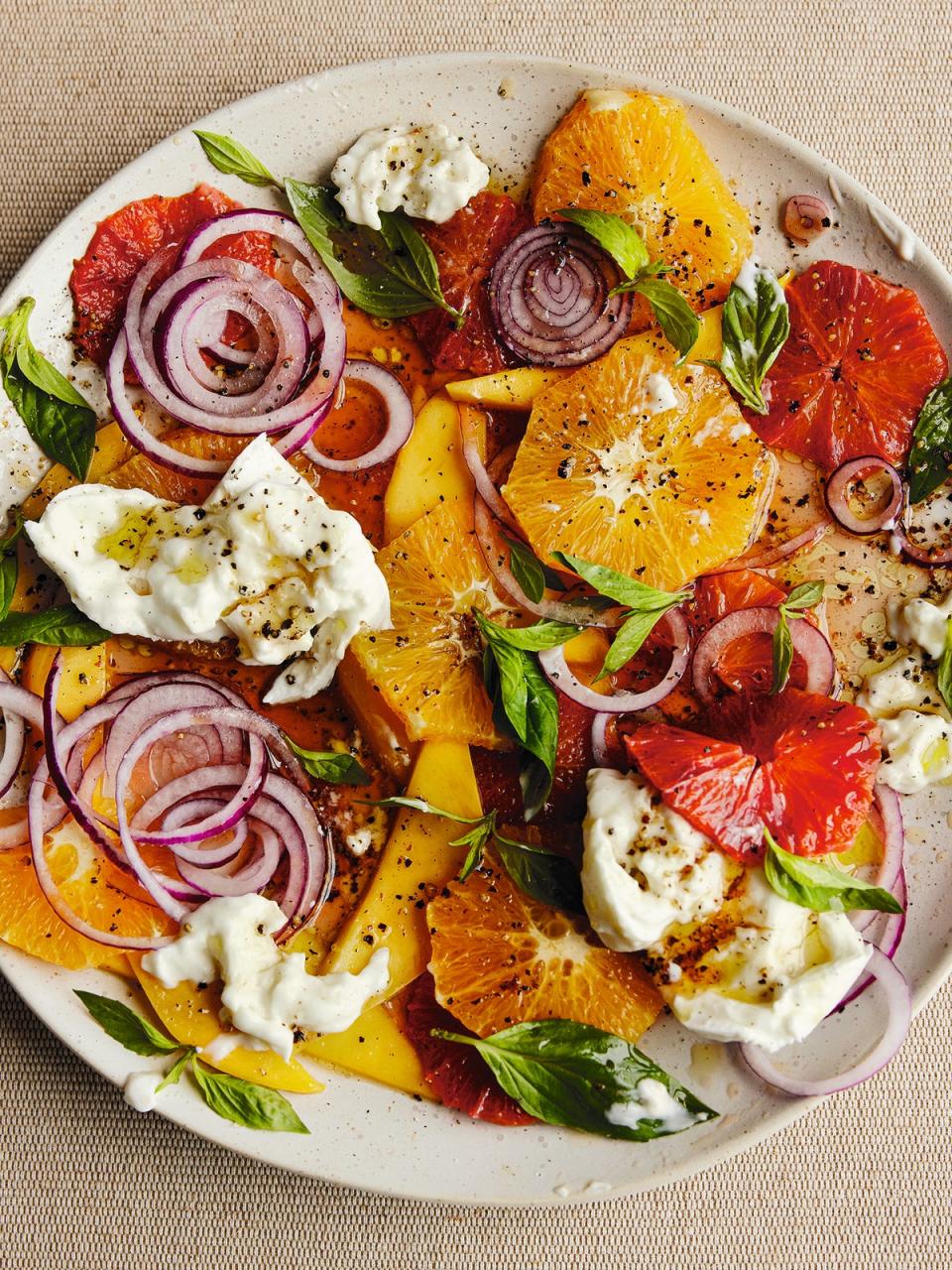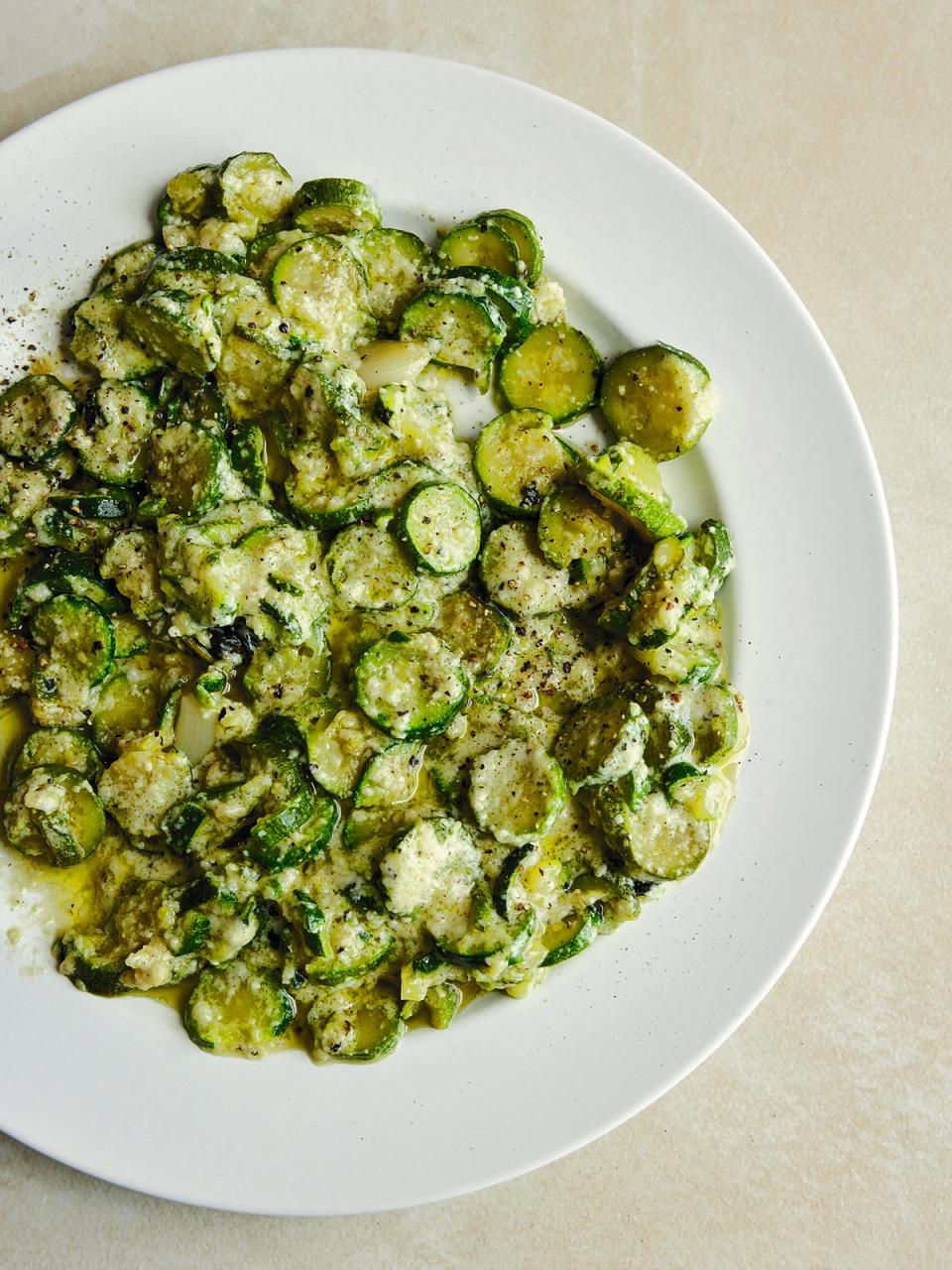How to make a salad that isn’t boring, uninspired or lacklustre

Salads have unfairly earned a reputation for being boring, and it’s easy to see why. For many, the word “salad” conjures images of uninspired bowls of lettuce, maybe a tomato slice or two, drowned in a lacklustre dressing.
But healthy eating doesn’t equate to bland, flavourless food thanks to Theo Kirwan. His new book Saladology is a celebration of everything a salad should be.
From a posh fennel and kohlrabi salad to a fiery spicy blood orange honey and charred carrot creation, each recipe is a symphony of colours, textures and flavours. Inspired by their own food experiences and crafted from ingredients grown on their organic farm in County Kildare, these recipes showcase the full potential of salads as delicious, satisfying meals.
With a little creativity and an open mind, salads can be anything but boring – they can be vibrant, exciting and utterly delicious.
Posh fennel and kohlrabi salad

This is an elegant way to serve fennel. Finely shaved, it still has some crunch but in a fresh, cleansing way. Serve alongside a simple piece of cooked fish, under the sun on a summer’s day.
Serves: 2 as a main, 4 as a side
Ingredients:
1 kohlrabi
1 fennel bulb
Juice of ½ lemon
1 orange
1 red chilli, finely sliced
Large handful of flat leaf parsley, finely chopped
2 tbsp olive oil
Salt and freshly ground black pepper
Method:
1. Peel the kohlrabi, then cut it in half lengthways and finely slice into half-moons using a mandolin if you have one. Trim off the stalks, reserving the fronds, and root end of the fennel bulb, then cut into similarly thin slices. Add the kohlrabi and fennel slices to a bowl with the lemon juice and a generous pinch of salt. Finely chop the reserved fennel fronds and set aside.
2. Zest the orange and set the zest aside. Slice off the top and bottom of the orange, then peel the skin off with a sharp serrated knife, removing as much of the white pith as you can. Cut the orange in half lengthways. Squeeze the juice of one half over the fennel and kohlrabi, then slice the other half into segments.
3. Add the orange segments to the bowl along with the red chilli, parsley, olive oil and 4–5 grinds of black pepper.
4. Pile everything on to a serving plate and top with the orange zest, the chopped fennel fronds and a little more black pepper if needed.
Spicy blood orange honey and charred carrot

When blood oranges are in season, do use them. Here they feature in the main event of the dish – the flavoured honey. Every time I’ve made this recipe, I’ve been left with leftovers of the honey, but that’s never been an issue! I love using it for a savoury breakfast with yogurt and nuts, smeared on toast with a soft cheese or in a salad dressing for a unique sweetness.
Serves: 4 as a side
Ingredients:
100g (3½oz) raw skin-on hazelnuts
1 bunch of baby carrots (about 500g/1lb 2oz), or 5–6 regular carrots, scrubbed
2 tbsp olive oil
2-3 spring onions, finely sliced diagonally
150g (5½oz) soft goats’ cheese (I use St Tola)
Salt
For the blood orange honey:
1 blood orange
Olive oil, for drizzling
2 red chillies, skin pierced with a sharp knife
6 garlic cloves, peeled and left whole
300ml (10fl oz) honey
2 rosemary sprigs
To serve:
A few fresh coriander sprigs
Juice of ½ lime
Extra virgin olive oil
Flaky sea salt
Method:
1. Start by preparing the hazelnuts. Preheat the oven to 200C (180C fan, 400F), gas mark 6. Spread the hazelnuts out on a baking tray and roast for about 8–10 minutes until golden brown. Remove from the oven and allow to cool for 5 minutes, then add the nuts to a clean tea towel and rub them inside the tea towel to remove the skins. Roughly chop the nuts or lightly crush using a pestle and mortar, then set aside.
2. For the blood orange honey, first finely grate the zest from the orange and set this aside for later, then cut the orange in half. Heat a griddle pan over a high heat. Drizzle olive oil all over the chillies, garlic and orange halves. Once the pan is scorching hot, add the garlic and chillies to the pan and char for about 4 minutes on each side until blackened. At the same time, place the orange halves, cut-sides down, in the hot pan and char for about 5 minutes until deliciously caramelized and syrupy on the edges.
3. Decant the honey into a saucepan, then place the charred oranges, cut-sides down, in the honey along with the chillies, garlic and rosemary sprigs. Bring the honey to a simmer, then turn the heat off and set aside to infuse. Squeeze all the juice from the oranges into the honey and set aside the gooey sweet chillies and garlic to use later on top of the salad. Strain the honey into an airtight jar and seal. You now have a spicy liquid gold for many occasions!
4. Reheat the griddle pan over a high heat (if your griddle is not ovenproof, use an ovenproof frying pan here instead). Preheat the oven to 200C (180C fan, 400F), gas mark 6. Keep the baby carrots whole, but if using regular carrots, cut them into quarters lengthways. Toss the carrots with the olive oil and a good pinch of salt in a bowl. Once the pan is scorching hot, add the carrots and char for about 3-4 minutes on each side, then transfer the pan to the oven for 8–10 minutes or until the carrots are tender.
5. To assemble, arrange the charred carrots and sliced spring onions on a serving plate, then spoon little dollops of the goats’ cheese and the roasted hazelnuts around. Slice up the chillies and garlic and scatter those on the plate. Drizzle the blood orange honey generously over everything, and finish with the coriander, blood orange zest and lime juice. Add a sprinkling of flaky sea salt and a splash of extra virgin olive oil and enjoy yourself!
Braised courgette cacio e pepe

Cacio e pepe is probably my favourite pasta dish of all time. Heavy on the black pepper and pecorino, it’s so beautifully simple. I’ve drawn on that classic Italian concept to create this special vegetable recipe. I’m not about to tell you that courgetti pasta is better than spaghetti, because it’s not! But something magical happens when you braise courgettes in their own juices. This could be thrown through pasta, as the courgettes become quite jammy and soft, but it’s stunning as a side dish. The recipe can easily be doubled or tripled depending on the size of your cooking pot.
Serves: 2 as a side
Ingredients:
2 courgettes
3 tbsp good-quality
Olive oil
Small handful of basil leaves (about 15g/½oz)
2 garlic cloves, peeled and smashed with the side of a knife generous pinch of salt
20g (¾oz) pecorino cheese, plus extra to serve
Lots of freshly ground black pepper
Squeeze of lemon juice, to serve
Method:
1. Cut the courgettes into discs about 5mm (¼ inch) thick. Place a heavy-based flameproof casserole or saucepan with a lid over the lowest heat you can. Add the olive oil and the courgettes, the basil and the whole garlic cloves along with the salt. Stir it all together, then cover the pan with the lid and cook very, very gently for 30 minutes. The courgettes shouldn’t fry or be getting any colour, but mostly steaming in the moisture coming from them. Lift the lid to check on them from time to time, gently stirring them around to make sure they all cook evenly.
2. Discard the wilted basil leaves and garlic (or remove and mash the garlic into a paste, then add it back to the pan), then grate in the pecorino, add 20 grinds of black pepper and very gently stir into the courgettes.
3. Spoon the braised courgettes on to a serving plate and serve with an extra grating of pecorino, a little extra black pepper and a squeeze of lemon juice.
‘Sprout & Co Saladology: Fresh Ideas for Delicious Salads’ by Theo Kirwan (Mitchell Beazley).

